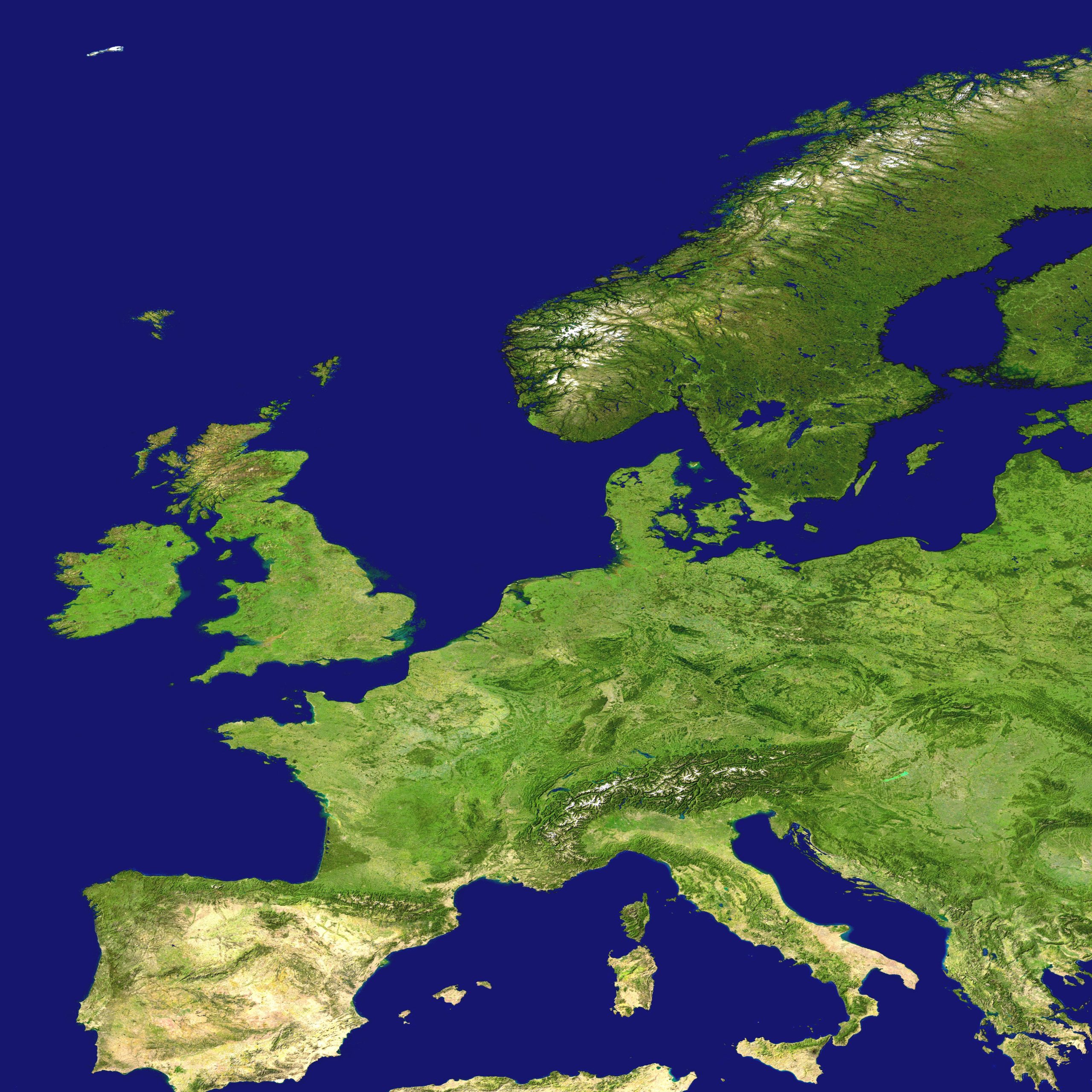
Equality has been associated with justice ever since Aristotle. Unlike errant ideologies such as those in the former Soviet Union, international human rights protection does not claim that all humans are equal, but that they are all entitled to the same rights. Equality as understood in context of international human rights protection does not serve a politicised, enforced equanimity. Instead, it concerns the task of protecting human rights and recognizing inequalities between people rather than levelling – but more on that later. What is striking about the principle of equality in the first place, is that the centrality of the right to equality is completely undisputed, while at the same time, the subject of its concrete application is hotly debated. This applies to the important questions regarding the nature of the principle of equality as well as the means of achieving it (→ Formal Equality).
But the more central question of who has the right to equal treatment can also be unsettling. In the case of Aristotle, it is not exactly astounding that he preached equality, yet found it natural that slaves were excluded from it. However, 2300 years later, the situation remains very similar: the authors of the American Declaration of Clearance Independence in 1776 were fairly uninhibited about the fact that their bold proclamation of the equality of all people made no mention of the practice of systematic slavery. But it was not only slaves who were excluded from this claim of equality: Women, too were left out of the equation. Despite two millennia of idealised equality in Germany and Austria, general women’s suffrage dates back just 90 years. In Liechtenstein, it was introduced only in 1984, and in the Swiss canton of Appenzell Innerrhoden, in late 1990 (→ Participation).
Aside from such glaring legal differences, human existence in general is characterized by a lack of equality. In this respect, Europe is an island of the blessed, as we have achieved a relatively advanced degree of equality on our continent. Global inequalities, however, do not end at Europe’s gates. Of the around two and a half million people that are in forced labour (including sexual exploitation) as a result of trafficking, , a part arrive in Europe (→ Kaleidoscope of Demographic Change). And even within the European societies, equality is a relative matter, particularly for ethnic, linguistic or religious minorities, whose efforts to have their demands for equality recognized is generally higher than among the members of the majority. In cases where people differ due to visible characteristics, there is a risk of structural inequality; for this reason, obviously distinguishing features such as gender, skin colour, and language were used as apportioning criteria in the allocation of economic, political, and social resources. It is not for nothing that political conflicts so often break down over the exploitation of these fine distinctions.
What do we mean by discrimination?

Photo: pixabay/Ohmydearlife
Discrimination can be either “direct” or “indirect”. Direct discrimination occurs when a person is treated less favourably on the basis of a certain distinguishing characteristic. According to Article 21 of the EU Charter of Fundamental Rights discrimination on the basis of the following grounds is prohibited under EU law (→ Lisbon Treaty): “gender, race, colour, ethnic or social origin, genetic features, language, religion or belief, political or any other opinion, membership of a national minority, property, birth, disability, age or sexual orientation”. Of course, this is merely a list of examples. It is also important to note that also indirect discrimination is prohibited under EU anti-discrimination law. Indirect discrimination refers to cases in which an apparently neutral provision, criterion or practice would put at a disadvantage those persons who meet the distinguishing characteristic of a minority. This does not apply if the provision, criterion or practice is objectively justified by a legitimate aim and the means employed to achieve this aim are appropriate and necessary. For example, where a distinction is made between the hourly overtime rate for part-time and full-time employees, women are disproportionally affected in comparison to men, since more part-time employees in the sector are women. Because the difference cannot be justified, it constitutes discrimination on the basis of gender, and is unlawful.
In addition to direct and indirect discrimination, harassment is also prohibited by EU anti-discrimination law (see below). This refers to unwanted conduct related to any of the grounds mentioned in context and having the “purpose or effect of violating the dignity of a person and of creating an intimidating, hostile, degrading, humiliating or offensive environment”. As with direct and indirect discrimination, the order of acts of harassment is itself illegal. In Summer 2008, the Court of Justice of the European Union in Luxembourg (CJECU) established that discrimination can exist even in the absence of any concrete victim. The case in question involved the Belgian company Feryn, installers of garage doors. Its managing director repeatedly stated publicly that his company was seeking to recruit installers, but could not employ people of foreign origin because its customers were reluctant to entrust them with access to their homes. The CJEU came to the conclusion that public statements in which an employer makes it known that it would not as a policy employ any person of a particular ethnic or racial origin are sufficient grounds to justify the presumption of a directly discriminatory recruitment policy. It is then up that employer to prove that no violation of the equal treatment principle has been committed by showing that the company’s actual recruitment practice does not establish direct discrimination. Similarly, the same Summer (2008), the CJEU handed down another important ruling, this time concerning the question of whether EU discrimination protection applies only to persons with disabilities, or extends to caregivers for such persons (so-called associative discrimination). The case concerned a Mrs. Coleman, parent of a disabled son and employee at an English law firm. In the proceedings, she demonstrated that her employer had called her “lazy” for taking off days to care for her son, and accused her of manipulating working conditions using her “fucking child” as an excuse. In its ruling, the CJEU affirmed the illegality of associative discrimination under EU law (at least in the context of disability).
Do minority members experience discrimination?
Discrimination can be found in the search for work, in work itself, in finding housing, in social and health services (such as a hospital stay, etc.), in education, in service at pubs and restaurants, shopping in the supermarket or applying for a bank loan – in short, discrimination can be found throughout all the aspects of everyday human life. In order to identify the locations of pronounced discrimination against minorities, 23,500 minority members were interviewed about their personal experiences as part of a large-scale study by the EU Fundamental Rights Agency. The first results of this “EU MIDIS” study were presented in early 2009. One indication was that roughly half of Roma indicated to have suffered some kind of discrimination in the preceding twelve months. On the other hand, significantly fewer migrants (23%) from the new EU Member States reported being discriminated against during this period. Among the members of the Turkish minority, the figure was only 14 percent. Particularly frequent victims of discrimination included the Roma living in the Czech Republic, Hungary and Poland as well as Africans living in Malta (60% or more experienced discrimination in the preceding year). Thus, Roma appear to be at particular risk of unwarranted disadvantage in Europe (→ Roma). Among the Roma, incidentally, the impression of a high discrimination rate was supported with specific concrete and personal experiences of discrimination. In contrast, while 59 percent of Russians in Estonia described discrimination there as “widespread,” just 17 percent specified personal experiences of being discriminated against in the past twelve months. This shows how the perception of the general situation of discrimination can be subjective, and is related to specific historical experiences and current expectations.
A study by the European Commission (Eurobarometer Special Survey 296, July 2008) showed that the majority of the general population assumed that discrimination on the basis of sexual orientation, age, or religious belief had decreased. However, discrimination based on ethnic origin was an exception to this pattern of perception, and was perceived as common by a majority of respondents. Ethnic discrimination was recognised by 62 percent of the general population, making it the most widely recognised form of discrimination in the EU, followed by discrimination based on sexual orientation (51%) and disability (45%). The Commission’s recent poll from November 2009 (Eurobarometer 317) indicated a new trend, as public perception of age-based discrimination has seen a sharp increase of 16 percent, and now ranks second in the top grounds of discrimination: 58 percent of the population are now of the opinion that age discrimination is widespread. The economic crisis may be a contributing factor to this increase. Regarding ethnic discrimination, it is noteworthy that while the survey shows that in the Netherlands, France, Hungary, Sweden, Malta, and Denmark, between 77-80 percent of the population consider ethnic discrimination is common, the percentages of those who have experienced discrimination do not correspond with these high figures. Conversely, in Estonia, Slovakia, the Czech Republic and Bulgaria less than 30 percent of respondents indicated that discrimination based on sexual orientation was widespread; at the same time, the percentage of the population claiming to have LGBT friends was merely sub-average (→ Homo- and Transsexuals). Here, as with various minority themes, treatment in the media sphere plays a role (→ Media). In any case, it remains true that ethnic discrimination is more widespread than is generally recognised (→ Xenophobia); this is confirmed by the results of the “EU MIDIS” study. Interestingly, in this study, only 10 percent of Muslim respondents reported experiencing religious discrimination within the last twelve months – the majority reported discrimination based upon their ethnicity. The wearing of religious symbols or clothing, which increase their recognisability as Muslims, did not appear to increase the risk of discrimination (→ Veil).
As for personal experience of discrimination by members of the general population, in the European Commission’s latest survey, 16 percent of respondents reported feeling like they had experienced discrimination on the basis of gender, disability, ethnic origin, age, sexual orientation, religion or belief within the last twelve months while 83 percent of Europeans stated that they did not feel they had been discriminated against during that period. The most frequently reported reason for the discrimination was age, (with 6% of respondents experiencing this form of discrimination over the year), followed by gender-based and ethnic discrimination (3% each). When these figures are compared with the results of the above mentioned EU-MIDIS survey, it is obvious that discrimination situations in the majority and minority populations are different. It is also interesting that in the Commission survey, significantly fewer people than had been expected claimed minority affiliation (multiple answers were possible). In 2008, 3 percent identified as ethnic minorities, 3 percent as religious minorities, 1 percent as sexual minorities and 2 percent as disabled. 2009 saw slight changes in those describing themselves as members of an ethnic minority (5%) or a religious minority (4%). It remains, however, that the overwhelming majority replied “none of the above” (85%) even though the estimated proportion of minorities is considerably higher (e.g. the proportion of disabled people in the EU’s total population is estimated at between 16 and 20%). That minority identification appears unattractive speaks to an assumption of discrimination.
Difficulties in the fight against discrimination
The probability of the state receiving report of any given act of discrimination is rather low. In many cases, there is a lack of awareness that discriminatory treatment is illegal and a lack of understanding of how to proceed against such behaviour. This was confirmed in the “EU MIDIS” study, wherein the vast majority of persons belonging to minorities interviewed were unaware that discrimination was legally forbidden and that public institutions offering assistance exist. Among the Turks in Austria, 84 percent knew of no such institution, while 75 percent of the Turks in Germany were similarly unaware. Significantly less than one-fifth of minority members reporting that they had experienced discrimination within the last twelve months stated that they had reported the discrimination incident in question – indicative that the underreporting of discrimination against minorities is very high. A shadow share of such proportions cannot be overcome merely through information campaigns on protection mechanisms for minority rights and corresponding government and private drop-in centres. It is telling, in this context, that the same study showed that only 36 percent of victims not reporting their incident of discrimination failed to do so because they were unaware of where to report such a crime. 63 percent of victims did not report the discrimination because they did not expect any result, while 40 percent indicated they consider discrimination “normal” and thus not worth reporting. Meanwhile, 26 percent stated that they were worried about the negative repercussions of making such a report, and 14 percent said that they would be afraid of intimidation by the discriminating party. Effective combating of discrimination thus requires strong signals of a firm commitment to the fight against discrimination in order to improve community trust in the state and public officials.
Europe’s answer to the real situation of discrimination

Photo: Unsplash/USGS
Since 1950, Article 14 of the European Convention on Human Rights and Fundamental Freedoms (ECHR) has forbidden discrimination – but this is not a self-standing right but rather refers to the equal “enjoyment” of the rights listed in the ECHR which is “secured without discrimination on any ground such as sex, race, colour, language, religion, political or other opinion, national or social origin, association with a national minority, property, birth or other status.” This prohibition is binding in all 47 current member-states of the Council of Europe. A general ban on discrimination (that is, independent of the other applicable ECHR provisions) was called for in the 12th Additional Protocol of the Council of Europe in 2000. This protocol very broadly prohibits the states from discrimination based upon the outlined criteria. In some countries, this Protocol has been in force since 1 April 2005, and was officially enacted by six EU Member States in Autumn 2009. Germany and Austria both signed the Protocol in Fall 2000, but thus far, neither has ratified it. Switzerland has not even signed it, and thus none of these three states is bound by the protocol.
Like the Council of Europe, the EU soon addressed the issue of discrimination, the internal struggle over which had begun in the early decades of the Union: It feared that free exchange among the EU countries would be threatened by different treatment on the basis of citizenship. Gender discrimination quickly became another major theme in the discussion. Until 1999 (the year the Amsterdam Treaty entered into force), the fight against these two specific forms of discrimination, (based on gender and citizenship) remained the primary concern of the EU. However, in the Treaty of Amsterdam, or more precisely, the former Article 13 of the EC Treaty, the EU was granted full legislative powers regarding equality policy (→ Formal Equality). The Council of the European Union can, after consulting the European Parliament, take appropriate action to combat discrimination based on sex, race, ethnic origin, religion or belief, disability, age or sexual orientation. Unlike Article 14 of the ECHR and Article 21 of the Charter of Fundamental Rights, which are merely prohibitive rules, this provision (now Article 19 of the Treaty on the Functioning of the Union), is an enabling rule, thus a competence base for the European Union. Recent constitutional developments at the EU level have further increased awareness of equality in a horizontal clause (→ Lisbon Treaty). Nevertheless, there remains a certain inconsistency between those forms of discrimination that are banned by EU law, and those which the EU can also actively combat by adopting anti-discrimination laws. For instance, the EU Charter of Fundamental Rights prohibits discrimination on the basis of language, while Article 19 of the Treaty on the Functioning of the Union does not allow the EU to pursue an active policy favouring regional and minority languages.
A look at the Equal Treatment Directives of the EU
Once the EU was assigned these new competences in the former Article 13 of the EC Treaty, it immediately made extensive use of them. In the mid- to late 2000s, two important directives on equal treatment were enacted: Directive 2000/43 on equal treatment of persons irrespective of racial or ethnic origin (Racial Equality Directive, → Xenophobia) and Directive 2000/78 establishing a general framework for equal treatment in employment and occupation (Framework Directive). Both were transposed into national law in the EU Member States and have led to significant changes in their anti-discrimination laws. This applies to the treatment of discrimination in court cases (such as the compulsory introduction of the so-called reverse burden of proof) as well as institutional changes such the need to establish specialised bodies for equality. Here the marked distinction between EU law and classical international law (as applied in the context of the Council of Europe) becomes apparent: EU law is far-reaching and directly encroaches upon national legal systems to guarantee actual alignment. However, this did not mean that there would be no difficulties in implementing the directives on equal treatment. Quite the contrary, as is evident in the significant degree of difference in implementation of the Racial Equality Directive between Member States. In 2007, under this directive 95 penalties were imposed in Great Britain, totalling more than € 140,000. In France, four penalties were imposed in the amount of € 30,000. Some countries have also persistently lagged in the establishment of the equality bodies as required by the Racial Equality Directive. The equality bodies vary considerably, and many have a deplorably low level of public visibility and effectiveness. Also, their responsibilities are very different (→ Homo- and Transsexuals). It is therefore a welcome development that these authorities are becoming increasingly interconnected at the European level, as can be seen in the EQUINET Association (the European Network of Equality Bodies). The Commission has announced that it will report on the effects of the Racial Equality Directive and the Framework Directive and propose changes where necessary on the basis of the respective findings.
All in all, it must be said that as the current system stands, the EU’s efforts for equality have had mixed results. The Racial Equality Directive was, already in 2000, a massive and decisive legal achievement in the fight against ethnic discrimination based on a solid political consensus. It prohibits racial discrimination in both the public and private sectors. Furthermore, this prohibition applies to a broad spectrum of possible everyday situations, far beyond employment relationships (→ Xenophobia). Discrimination on other grounds, such as age or sexual orientation, is prohibited under the Framework Directive (→ Homo- and Transsexuals). However, his thematically parallel ban has a narrower scope: It is limited to the context of the workplace, and thus leaves countless everyday situations outside its scope of protection. The European Commission now wants to eliminate this asymmetry in anti-discrimination policy: In mid-2008, it proposed in its “Renewed Social Agenda” to adopt a policy requiring equal treatment outside the context of employment with respect to all grounds of discrimination outlined in the present Article 19 of the Treaty on the Functioning of the Union. Some Member States have been reserved in their enthusiasm, however, so it may be that this proposal becomes a nominal one and never goes into force.
Two take aways:
- Discrimination is the unfair unequal treatment of people. Several legal texts offer examples of the distinctive features most frequently used as a basis for unjustified discrimination. These include gender, ethnicity, language, religion, and national origin, as well as membership in a (national) minority.
- In Europe, the fight against ethnic discrimination is particularly important. It is being dealt with decisively by means of EU law. At the same time, ethnic discrimination remains very widespread. The fight against discrimination requires more than legal standards: public awareness and confidence in the public sector are crucial. The latter are lacking on the part of the potential victims, as the number of unreported cases of discrimination remains very high.
